Finance
Decentralized Finance (DeFi): Opportunity or Risk? A Deep Dive into the Rise of DeFi Platforms and Their Challenge to Traditional Finance

Introduction to Decentralized Finance
Decentralized Finance, commonly referred to as DeFi, represents a transformative approach to financial services, leveraging blockchain technology to democratize access to financial systems. Unlike traditional finance, which relies on centralized intermediaries such as banks and financial institutions, DeFi operates on decentralized platforms, enabling peer-to-peer transactions without the need for a governing authority. This paradigm shift is grounded in the principles of transparency, accessibility, and permissionless transactions.
The underlying technology of DeFi is blockchain, a distributed ledger that records transactions across numerous computers in a secure and transparent manner. By utilizing smart contracts—self-executing contracts with the agreement directly written into code—DeFi platforms automate and facilitate numerous financial processes. This not only enhances security but also reduces costs associated with traditional financial services due to the elimination of intermediaries.
One of the most significant advantages of DeFi is its accessibility. Individuals can participate in the DeFi ecosystem regardless of geographic location or socio-economic background, provided they have internet access. This broadened access empowers unbanked populations to engage in lending, borrowing, and trading activities, thus promoting financial inclusion on a global scale. Additionally, DeFi projects typically operate on open-source software, allowing developers to collaborate and innovate freely, which further fosters an environment of creativity within the financial sector.
Moreover, DeFi promotes permissionless transactions, meaning that anyone can build or participate in financial applications without needing approval from a central authority. This characteristic not only fosters innovation but also gives users greater control over their assets and financial destiny. The differences between DeFi and traditional finance are stark, particularly in terms of operational frameworks and user empowerment. Understanding these contrasts is essential as we explore the opportunities and risks that DeFi platforms present to the global financial landscape.
Historical Context: The Emergence of DeFi
The historical development of Decentralized Finance (DeFi) is pivotal in understanding its current significance and future trajectory. Its roots can be traced back to the early innovations in blockchain technology, particularly with the introduction of Bitcoin in 2009. While Bitcoin initially served as a digital alternative to traditional currency, it laid the groundwork for broader applications in financial systems, setting the stage for what would ultimately evolve into DeFi.
The real turning point came with the launch of Ethereum in 2015, which introduced smart contracts—self-executing contracts with the terms of the agreement directly written into code. This breakthrough allowed developers to create decentralized applications (dApps) with financial functionalities. Consequently, Ethereum became the platform of choice for numerous DeFi projects, enabling various financial services such as lending, borrowing, trading, and yield farming in a decentralized manner.
Key milestones in DeFi’s evolution have included the launch of significant protocols and platforms. In 2017, platforms like MakerDAO introduced decentralized lending and stablecoins, crucial elements that helped address the volatility associated with cryptocurrencies. The emergence of Uniswap in 2018 revolutionized decentralized exchanges by enabling users to trade cryptocurrencies without the need for intermediaries, further enhancing liquidity and accessibility.
As more projects surfaced, such as Compound and Aave, the DeFi landscape became increasingly sophisticated. These platforms offered innovative solutions, including liquidity pools and algorithmic interest rates, thereby attracting a growing user base. By 2020, DeFi had gained significant traction, with billions of dollars locked in various protocols, highlighting a clear shift towards a more decentralized financial system. This historical context illustrates how DeFi has transitioned from a niche concept to a major player in the financial ecosystem, challenging traditional finance and offering new opportunities for users worldwide.
Key Components of DeFi Platforms
Decentralized Finance (DeFi) platforms have emerged as transformative entities within the financial landscape, fundamentally altering the way financial transactions are conducted. Several key components work in unison to offer tools and services that rival traditional financial systems.
One of the most prominent elements is lending and borrowing protocols. Platforms like Aave and Compound allow users to lend their cryptocurrencies in exchange for interest, presenting opportunities for passive income. Additionally, borrowers can secure loans without the need for intermediaries, utilizing their crypto assets as collateral. This peer-to-peer lending model facilitates a trustless approach to borrowing and lending, enhancing access while minimizing costs.
Automated Market Makers (AMMs) are another vital component of DeFi platforms. Unlike traditional exchanges that rely on order books, AMMs use algorithms to set prices based on supply and demand. Uniswap exemplifies this model, enabling users to trade directly from their wallets, thereby eliminating the need for centralized exchanges. Liquidity providers on these platforms can earn transaction fees by supplying tokens to liquidity pools, which creates a decentralized environment for trading.
Decentralized Exchanges (DEXs) also play a crucial role in the DeFi ecosystem. DEXs facilitate peer-to-peer trading of cryptocurrencies without involving a central authority. They ensure users maintain control over their private keys and assets, promoting a secure trading environment. As a prime example, platforms like SushiSwap offer innovative features and community-driven governance, enhancing user engagement.
Stablecoins are essential in the DeFi sector, providing a stable value against fiat currencies. By minimizing crypto’s volatility, stablecoins such as DAI and USDC enable users to engage seamlessly in trading and lending activities. Moreover, yield farming has gained popularity, allowing users to maximize their returns by providing liquidity to protocols in exchange for rewards. By merging these elements, DeFi platforms are reshaping finance, democratizing access, and presenting exciting opportunities for investors and users alike.
The Benefits of DeFi: Opportunities for Users
Decentralized Finance (DeFi) has emerged as a transformative element in the financial landscape, providing a plethora of opportunities for users that traditional financial systems often fail to deliver. Central to the advantage of DeFi is its enhanced accessibility. By leveraging blockchain technology, users anywhere in the world can engage with financial services without the restrictions typically imposed by banks. This is particularly beneficial for underbanked populations who historically have had limited access to traditional finance.
Another significant benefit of DeFi is the reduced fees associated with transactions. Traditional financial systems often impose a variety of fees, including transaction fees, maintenance fees, and withdrawal fees. In contrast, DeFi platforms utilize smart contracts, which automate processes and eliminate intermediaries, leading to significantly lower costs for users. Furthermore, this cost efficiency also translates into greater capital efficiency, as users can maximize their returns on investments without the burden of excessive fees.
DeFi also opens pathways for higher yields not commonly found in traditional finance. Through yield farming and liquidity mining, users can earn interest on their assets at rates that exceed traditional savings accounts or even many investment vehicles. By participating in these DeFi platforms, users have the opportunity to diversify and grow their assets more effectively.
Notably, the impact of DeFi on global access to financial services is illustrated by case studies from various countries. For example, regions with unstable banking systems have witnessed a surge in DeFi adoption, as users turn to cryptocurrency-based platforms to safeguard their assets. These platforms provide a level of financial security and reliability absent in local monetary systems, showcasing the potential of DeFi to empower individuals.
In summary, the opportunities presented by DeFi—such as increased accessibility, lower transaction fees, and the potential for greater yields—demonstrate its capacity to revolutionize the financial landscape and bring services to those who need them most.
Risks and Challenges Associated with DeFi
Decentralized Finance (DeFi) presents substantial opportunities but also comes with inherent risks and challenges that participants must navigate. One significant risk is the vulnerability of smart contracts, which form the backbone of DeFi platforms. These self-executing contracts can contain bugs or flaws, leading to significant losses when exploited. For instance, the reentrancy attack on the DAO (Decentralized Autonomous Organization) in 2016 resulted in the loss of $50 million worth of Ether, highlighting the potential pitfalls of flawed smart contract architecture.
Market volatility is another critical concern for users engaged in DeFi. The highly speculative nature of cryptocurrency markets can lead to rapid price fluctuations, impacting the overall stability of DeFi platforms. For example, fluctuations in the value of stablecoins or collateral assets can trigger liquidations of positions, causing users to lose substantial investments. The infamous “Black Thursday” event in March 2020 saw many DeFi platforms struggle to maintain solvency as Ethereum prices plummeted, leading to widespread liquidations and significant losses.
Regulatory challenges also loom large over the DeFi ecosystem. Given that DeFi operates in a largely unregulated environment, it faces scrutiny from government authorities worldwide regarding compliance with existing financial regulations. Regulatory actions, such as bans or stringent guidelines, could stifle innovation and adversely affect the DeFi market. Additionally, users face the risk of scams and hacks, which have become increasingly sophisticated. Events like the hack of Poly Network in 2021, where $610 million was stolen, serve as stark reminders of the security vulnerabilities that can plague even established DeFi platforms.
In light of these challenges, potential investors must conduct thorough due diligence and be aware of the inherent risks associated with the DeFi space. By understanding these factors, they can better navigate this complex financial landscape and make informed decisions. The balance of opportunity and risk remains a defining characteristic of the DeFi revolution.
Comparing DeFi to Traditional Finance
Decentralized Finance (DeFi) and Traditional Finance (TradFi) operate within distinctly different frameworks that reflect their underlying philosophies and methodologies. The primary distinction lies in their structure: while TradFi is characterized by centralized institutions such as banks and regulatory bodies that govern financial transactions, DeFi leverages blockchain technology to eliminate intermediaries, enabling peer-to-peer interactions. This decentralization is one of DeFi’s most significant advantages, as it promises efficiency and reduced costs by streamlining processes that are often bogged down in bureaucracy within TradFi.
Operational mechanics also differ significantly between these two systems. In TradFi, transactions can take days to settle, hindered by the clearing and settlement systems. Conversely, DeFi transactions can be executed almost instantaneously, utilizing smart contracts that automate and enforce agreements without the need for intermediaries. This speed is particularly appealing in markets that demand agility.
When it comes to risk exposure, both systems present unique challenges. TradFi markets are heavily regulated; while this offers some protections for consumers, it can also lead to systemic risks, as evidenced by past financial crises. DeFi, although providing greater user autonomy and potential for higher returns, exposes users to various risks such as smart contract vulnerabilities and market volatility. Furthermore, the lack of formal regulatory oversight in DeFi platforms raises concerns regarding consumer protection and fraud.
Scalability is another area of contrast. TradFi systems tend to struggle with scalability during high-demand periods, often resulting in high transaction costs and delays. In contrast, DeFi platforms are designed to accommodate a growing user base, although they too face scaling challenges related to network congestion and transaction fees on blockchain networks.
Lastly, user experience is also quite different. While TradFi typically involves a more familiar user interface and often a personal touch in customer service, DeFi requires users to navigate crypto wallets and decentralized applications, which may be less intuitive for those unfamiliar with blockchain technology. Understanding these differences is essential for evaluating the respective merits and limitations of DeFi compared to traditional finance.
Regulatory Landscape of DeFi: Navigating Uncertainties
The rise of Decentralized Finance (DeFi) has sparked a global discourse on the regulatory implications of this burgeoning industry. With its decentralized nature, DeFi challenges traditional financial regulations and poses unique challenges for regulators worldwide. Different jurisdictions are responding to the growth of DeFi in varying ways, with some countries embracing it while others adopt a more cautious or prohibitive stance. For instance, regions like the European Union are exploring frameworks to integrate DeFi within existing financial regulations, aiming to foster innovation while ensuring consumer protection.
The potential legal implications for users and platforms engaged in DeFi are intricate. Since many DeFi platforms operate without a centralized authority, defining liability in cases of fraud, hacking, or failure becomes complicated. Regulatory bodies are grappling with how to categorize these platforms – should they be treated as traditional financial institutions or as novel technological entities? This uncertainty creates a challenging landscape for both investors and developers navigating compliance requirements.
Furthermore, the creation of a regulatory framework that encourages innovation while safeguarding participants presents additional difficulties. Regulators are tasked with balancing the need to protect consumers against risks such as scams and volatility with the desire to support an ecosystem that can provide financial services to unbanked populations or improve existing financial systems. This balancing act is paramount, as overly stringent regulations may stifle innovation, pushing DeFi activities further into unregulated territories.
In conclusion, the regulatory landscape surrounding DeFi is complex and still evolving. As jurisdictions take different approaches, it is crucial for both users and developers to remain informed of regulatory changes that may impact their participation in DeFi. Collaborative efforts between regulators and industry stakeholders will likely be necessary to shape a regulatory environment that supports sustainable growth in this exciting sector.
The Future of DeFi: Trends and Predictions
The landscape of decentralized finance (DeFi) is rapidly evolving, reflecting a broad array of emerging trends that suggest a transformative future for both decentralized platforms and traditional financial systems. One of the most notable trends is the development of cross-chain solutions, which aim to enhance interoperability among various blockchain networks. As these solutions mature, they are expected to enable seamless transactions across different DeFi platforms, thereby reducing friction and promoting a more integrated ecosystem. This level of interoperability will likely facilitate the exchange of assets and services, making the DeFi space more accessible to a wider audience.
Another trend gaining traction is the integration of DeFi with traditional financial systems. As established financial institutions begin to recognize the potential of DeFi, we are witnessing a gradual blend of these realms. Financial entities are exploring ways to incorporate blockchain technology into their existing infrastructures, offering clients hybrid models that combine the benefits of DeFi’s efficiency with the trustworthiness of traditional finance. This integration may lead to enhanced liquidity, lower costs, and improved user experiences for consumers and investors alike.
Advancements in security and user interfaces are also paramount in shaping the future of DeFi. As the industry matures, the focus on robust security measures is expected to intensify, addressing vulnerabilities that have previously plagued DeFi platforms. Enhanced security protocols and insurance solutions may build greater confidence among users, encouraging wider adoption. Furthermore, the user experience is set to improve significantly, with intuitive interfaces aimed at simplifying navigation and transactions, making DeFi more user-friendly for those unfamiliar with blockchain technology.
Experts predict that the long-term sustainability of DeFi will rely heavily on its ability to innovate and adapt in the face of regulatory scrutiny and market dynamics. As it continues to challenge traditional finance, the future of DeFi holds immense potential for democratizing access to financial services, promoting inclusivity, and reshaping the global financial system.
Conclusion
The discussion surrounding decentralized finance (DeFi) brings to light a multifaceted landscape where opportunities and risks coexist. Over the course of this blog post, we have examined how DeFi platforms are emerging as viable alternatives to traditional financial services, primarily driven by their ability to foster financial inclusion, enhance transparency, and offer innovative solutions such as yield farming and liquidity mining. These models present users with the potential for attractive returns, enabling a new wave of entrepreneurial ventures and individual financial empowerment.
However, alongside these opportunities lie significant risks that demand careful consideration. The DeFi ecosystem is marked by volatility, regulatory uncertainty, and the prevalence of smart contract vulnerabilities. Users engaging with these platforms must recognize that the potential for high returns often comes with an equally high level of risk. Moreover, the lack of consumer protections typical of traditional finance means that investors must undertake extensive due diligence before participating in any DeFi project, as the risks of hacks, scams, and abrupt market fluctuations can lead to severe financial losses.
Thus, while DeFi represents a revolutionary shift in how financial services can be accessed and utilized, it is imperative that users approach this new paradigm with an informed and cautious mindset. Conducting comprehensive research and thoroughly evaluating both the opportunities and challenges posed by DeFi platforms is essential for making sound investment decisions. In light of the transformative potential that DeFi holds, fostering a balanced perspective will allow individuals to leverage its advantages while also safeguarding against its inherent risks.
Investing
Global Investor Outflows from U.S. Stocks & Dollar
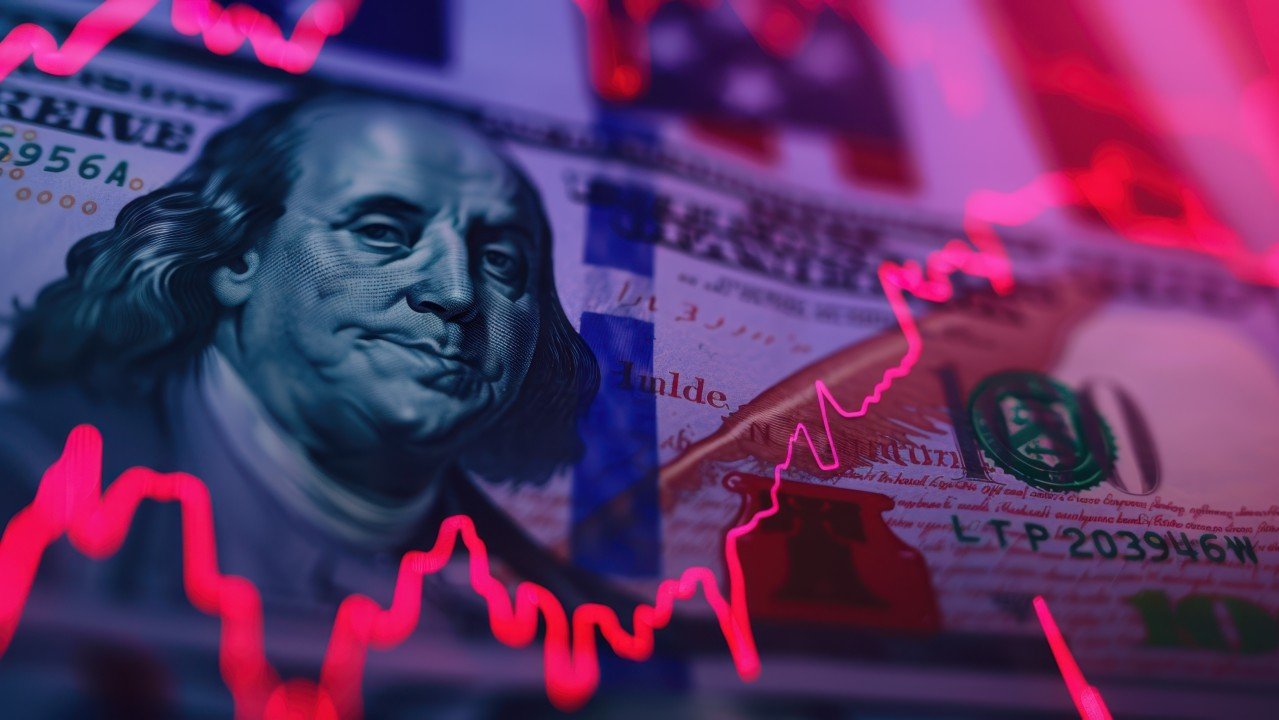
In a shift that is sending ripples across financial markets, institutional investors around the world are pulling back from U.S. equities and reducing exposure to the U.S. dollar, signaling a significant change in sentiment toward American assets. According to the latest Bank of America Global Fund Manager Survey, global investors are now the most underweight on U.S. stocks in more than two decades, with the dollar facing similar skepticism as a long-term safe-haven asset. This transition is being fueled by multiple converging factors, including geopolitical instability, growing U.S. fiscal deficits, trade tensions, and an increasingly favorable investment climate in Europe and select emerging markets. For investors, economists, and policymakers alike, this trend represents a rebalancing of global capital flows that could reshape market dynamics in the months ahead.
Investor Sentiment Toward U.S. Markets Hits Multi-Year Lows
The Bank of America survey, considered a key barometer of global institutional sentiment, reveals that fund managers have turned heavily underweight on U.S. stocks and the dollar, preferring instead to rotate their portfolios into European and Asian equities. The survey showed that 36% of participants are now net underweight U.S. equities—the highest level since 2003. At the same time, positioning on the dollar turned net negative for the first time in over five years, with investors citing mounting fiscal concerns, valuation extremes, and weakening macroeconomic indicators.
The U.S. equity market, especially the tech-heavy NASDAQ, has experienced an extraordinary bull run over the last several years. But now, investors are questioning the sustainability of elevated valuations, particularly as economic growth slows, earnings forecasts are revised downward, and inflation remains persistently above target. Many portfolio managers believe the best returns may no longer be found in U.S. assets alone.
Rising U.S. Debt and Fiscal Deficits Raise Red Flags
A key driver of investor caution is the ballooning U.S. fiscal deficit. The Congressional Budget Office (CBO) projects that the U.S. federal deficit will reach over $1.8 trillion this year, driven by increased government spending, rising interest costs, and lower-than-expected tax revenues. The national debt is now projected to exceed 125% of GDP by 2030, raising serious questions about long-term fiscal sustainability.
Investors fear that soaring U.S. debt levels could lead to a loss of confidence in Treasury securities, pushing yields higher and triggering volatility in global credit markets. This concern is magnified by the growing political polarization in Washington, which has led to repeated debt ceiling standoffs and policy gridlock. As a result, some asset managers are choosing to diversify their bond portfolios with sovereign debt from countries like Germany, Canada, and Australia—nations viewed as having stronger fiscal discipline.
Geopolitical Tensions Erode Dollar Safe-Haven Appeal
The traditional role of the U.S. dollar as a global safe-haven currency is also being called into question. With the U.S. now embroiled in rising geopolitical conflicts, including its military engagement in the Middle East and an escalating trade war with China, the perception of the dollar as a “neutral” or stable currency is beginning to fade. Several countries, particularly in the Global South, have voiced frustration over the dominance of the dollar in international trade, and some have even accelerated efforts to settle trade in alternative currencies such as the euro, yuan, or local currency blocs.
In response, central banks in emerging markets are reducing their U.S. dollar reserves and increasing holdings in gold and non-dollar currencies. This trend, while gradual, is gaining momentum and contributing to the dollar’s underperformance against a basket of global currencies. The U.S. dollar index (DXY) has declined by nearly 6% year-to-date, reflecting both diminished investor confidence and a broader reconfiguration of reserve management strategies.
Attractive Valuations Abroad Drive Capital Outflows
While risks in the U.S. are mounting, attractive investment opportunities abroad are also contributing to the outflow of capital from American markets. European equities, particularly in sectors like green energy, luxury goods, and financial services, are seeing renewed interest thanks to relatively low valuations and improving macroeconomic stability. The recent ECB rate cuts and Eurobond discussions have added to optimism about the region’s fiscal and financial integration.
In Asia, countries like India, Indonesia, and Vietnam are emerging as new hotspots for foreign direct investment and equity inflows. These economies offer robust growth prospects, younger demographics, and increasingly tech-driven industries. Additionally, Japan’s bond market is seeing increased institutional buying, as long-term yields rise in response to the Bank of Japan’s policy changes.
This global diversification strategy is not just about seeking higher returns—it’s also about managing risk. Investors are increasingly looking to balance their portfolios geographically, reducing dependence on any single region and hedging against macroeconomic shocks that may be specific to the U.S.
Currency Hedging and Diversification as Defensive Strategies
In response to the dollar’s volatility, many fund managers are now engaging in currency hedging strategies to protect their portfolios. Currency ETFs, options, and forward contracts are being used to minimize the downside risk of a weakening dollar. At the same time, global investment funds are ramping up their exposure to non-dollar-denominated assets, including eurozone corporate bonds, emerging market debt, and local-currency sovereign issues.
Moreover, ESG and green bond markets in Europe and Asia are attracting capital due to their alignment with global sustainability goals. These instruments not only offer diversification but also align with broader institutional mandates on responsible investing.
Implications for U.S. Markets and Monetary Policy
The capital flight from U.S. assets could have significant implications for American markets. A persistent decline in foreign demand for U.S. Treasuries may force the Federal Reserve to intervene more frequently in the bond market to maintain liquidity and control yields. At the same time, a weaker dollar could contribute to imported inflation, complicating the Fed’s efforts to bring core inflation back within its target range.
On the equities side, if investor outflows persist, U.S. companies may face higher capital costs and declining valuations, particularly in sectors that rely heavily on foreign investment or exports. Domestic pension funds and institutional investors may need to fill the gap left by global investors, which could further alter asset allocation strategies and influence corporate financing decisions.
A New Era of Global Capital Rotation
The growing shift away from U.S. stocks and the dollar signals the beginning of a new era in global investing, one defined by diversification, geopolitical hedging, and currency rebalancing. While the U.S. remains a central player in global finance, the days of unquestioned dominance are beginning to fade, as investors embrace a more nuanced and distributed view of risk and opportunity.
For market participants, staying agile in this environment means tracking global fund flows, monitoring geopolitical developments, and reassessing the traditional U.S.-centric portfolio model. As capital continues to flow into European and Asian markets, the future of global finance is being rewritten—and those who adapt early may find themselves ahead of the curve.
Finance and Economy
France Pushes Eurozone Toward Joint Eurobond Issuance
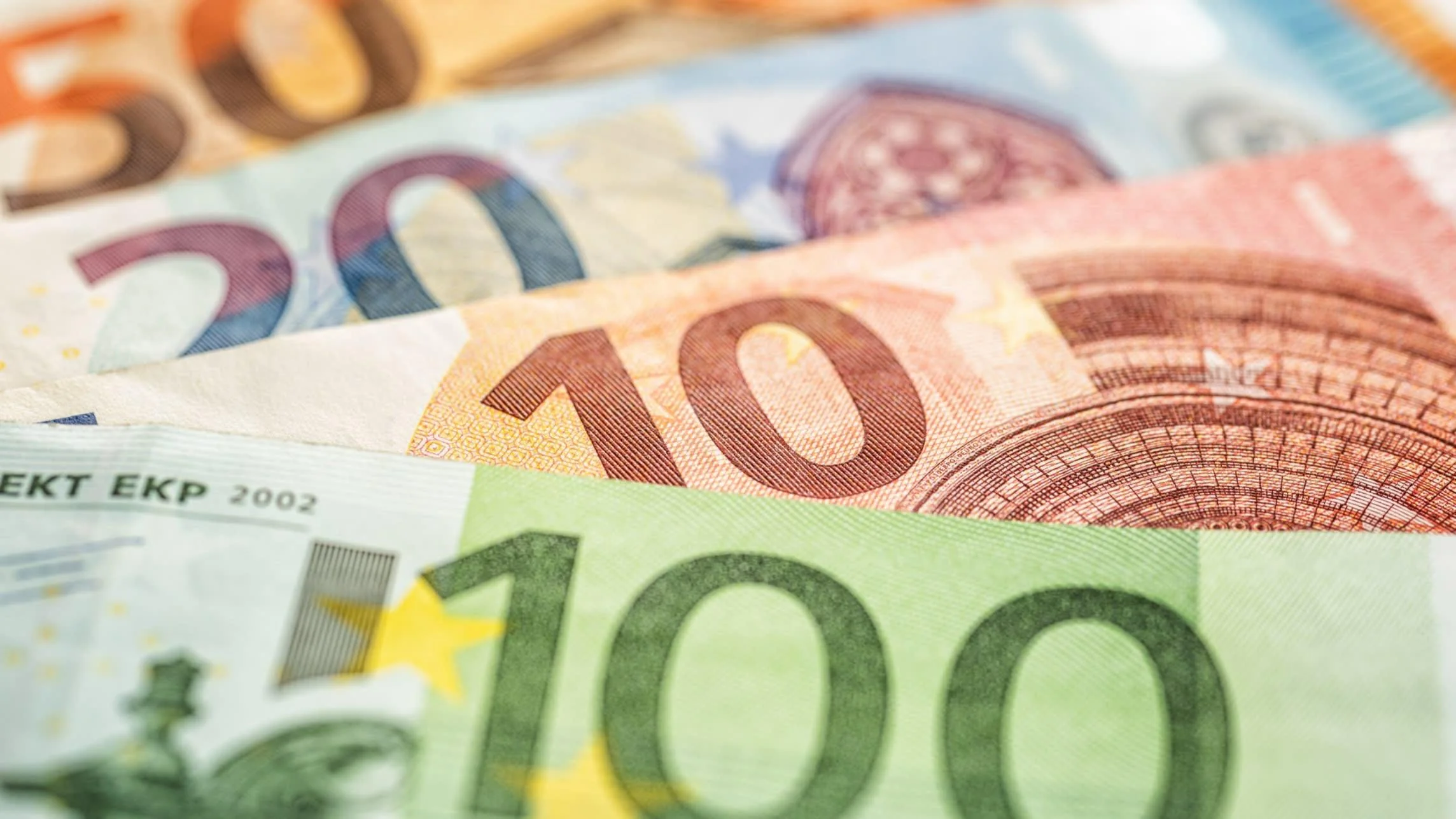
In a bold move that could redefine the financial architecture of the European Union, France has renewed its push for the issuance of joint eurozone debt instruments – commonly referred to as Eurobonds – as a way to strengthen the euro on the global stage. As the EU prepares for its upcoming summit on June 26-27, the proposal is once again stirring heated debate among member nations. French officials argue that a shared debt mechanism is essential not only for financial resilience but also for elevating the euro’s standing as a credible alternative to the U.S. dollar. While the idea garners support from key institutions like the IMF and the ECB, resistance from fiscally conservative member states continues to block consensus. This article explores the implications of France’s proposal, the potential benefits and challenges of Eurobond issuance, and the evolving role of the euro in a multipolar financial world.
France’s Strategic Case for Eurobonds
French President Emmanuel Macron and Finance Minister Bruno Le Maire have long been advocates for deeper EU financial integration. According to them, Eurobonds would represent a tangible step toward fiscal solidarity and monetary cohesion, allowing member nations to borrow at collectively favorable rates while demonstrating political unity. The latest push comes at a time when the European economy is facing several headwinds: slowing growth, fragmented recovery across member states, and heightened global financial volatility triggered by geopolitical conflicts and energy insecurity. Macron has reiterated that a common debt tool is essential for financing major EU-wide projects such as green energy transition, digital infrastructure, and military defense.
From a strategic standpoint, France views Eurobonds as more than just a financial mechanism – they are a symbol of EU credibility and resilience. By pooling risk and aligning borrowing capacity, the eurozone could present a united front in capital markets, reducing the vulnerability of weaker economies and improving the euro’s attractiveness to foreign investors.
The Euro’s Current Global Standing and Its Challenges
Despite being the world’s second most-used currency, the euro still lags far behind the U.S. dollar in terms of global reserve share, trade settlement, and safe-haven preference. Analysts point out that one of the primary reasons for this is the fragmented nature of the eurozone bond market. Each country issues its own sovereign debt, leading to a lack of a single, risk-free eurozone bond benchmark – unlike U.S. Treasuries, which offer deep liquidity and low risk.
France’s proposal seeks to address this imbalance. A unified Eurobond market could create a highly liquid, stable, and scalable financial product that would attract central banks, pension funds, and sovereign wealth investors. Over time, this could shift more global reserves into euros, boosting the currency’s influence in global trade and finance.
Institutional Support: IMF, ECB, and Market Participants
Key international organizations have thrown their weight behind the idea. The International Monetary Fund (IMF) has suggested that Eurobonds could enhance the EU’s fiscal capacity and crisis response agility. Meanwhile, European Central Bank (ECB) officials, including President Christine Lagarde, have hinted that deeper fiscal integration is necessary for the euro to realize its full potential.
Financial market participants have also shown interest. Asset managers argue that Eurobonds could become a cornerstone of fixed-income portfolios, particularly for investors looking to diversify away from dollar-denominated assets. Some analysts compare the opportunity to the creation of the U.S. Treasury market in the post-war era, which laid the groundwork for the dollar’s global dominance.
Opposition from the Frugal Four and Risk-Sharing Concerns
Despite France’s enthusiasm and institutional support, significant opposition persists from fiscally conservative EU nations, notably Germany, Austria, the Netherlands, and Finland—often dubbed the “Frugal Four.” These countries argue that shared debt would penalize responsible fiscal behavior and open the door to moral hazard, where weaker economies might overborrow under the protection of joint guarantees.
German officials have also cited constitutional constraints and public opposition to any perceived “debt mutualization.” Instead, they advocate for reforms at the national level, more stringent budget controls, and the use of existing mechanisms like the European Stability Mechanism (ESM) for crisis funding.
This divide continues to stall formal negotiations. At the heart of the debate is the question of trust and fiscal governance, as many northern states remain skeptical about the long-term commitment of their southern counterparts to austerity and budget discipline.
Implications for Financial Markets and Investors
If approved, Eurobonds would be a game-changer for European capital markets. They would offer a new safe asset class, potentially rivaling U.S. Treasuries in size and reliability over the long term. For the European banking system, Eurobonds could provide high-quality collateral and improve liquidity conditions, especially for cross-border lending.
Investors are closely monitoring the situation. If the EU takes concrete steps toward joint bond issuance, bond yields across peripheral economies like Italy, Spain, and Greece could compress further, as risk premia shrink in anticipation of shared guarantees. Simultaneously, euro-denominated assets may see a surge in foreign inflows, especially from central banks seeking to rebalance reserve portfolios.
Strengthening the Euro’s Role in a Multipolar World
The geopolitical landscape is increasingly defined by multipolarity, with China, Russia, and the U.S. competing for influence in trade, finance, and security. In this context, the eurozone faces a historic opportunity to carve out a more assertive role. Strengthening the euro through fiscal and capital market integration is seen as essential to counterbalance the dollar’s dominance and reduce reliance on U.S.-led financial infrastructure.
Eurobonds could serve as a financial pillar in this transition. As global investors seek alternatives in a fragmented world economy, the euro’s rise as a stable, investable, and liquid currency backed by joint instruments could bolster its credibility and utility.
A Defining Moment for European Unity
France’s push for Eurobonds is more than just a fiscal proposal – it is a call for political and financial unity in a time of global uncertainty. While the road to consensus is steep, the growing support from institutions, investors, and southern EU members suggests that momentum is building. The upcoming EU summit will be a crucial test of the bloc’s ability to move beyond national interests and toward a shared financial future.
If successful, Eurobond issuance could redefine the eurozone’s role in the global economy, offering new tools for crisis response, economic development, and financial competitiveness. For investors and policymakers alike, this moment marks a critical juncture – either Europe seizes the opportunity to lead, or it risks remaining a secondary player in a rapidly evolving financial world.
Finance and Economy
Oil Price Spike as Middle East Conflict Deepens: A Global Market Wake-Up Call

The financial world is once again on high alert as escalating tensions in the Middle East have triggered a sharp surge in global oil prices, sending shockwaves through equity, commodity, and currency markets alike. With the U.S. reportedly striking Iran’s nuclear sites, Brent crude surged over 18%, nearing $80 per barrel in a matter of hours. The sudden volatility reignited fears of a potential $100 oil scenario, reminiscent of past geopolitical flashpoints that deeply impacted global supply chains, inflation expectations, and central bank policy stances. This article delves into the causes, consequences, and global financial implications of this emerging crisis.
The Trigger: U.S. Strikes on Iran’s Nuclear Infrastructure
On June 21, 2025, international news outlets confirmed that U.S. military forces had targeted Iranian nuclear facilities in what they described as a “pre-emptive defensive measure.” While the full extent of the damage is still being assessed, the attack has clearly escalated tensions in an already volatile region. The Middle East, being a vital hub for global oil production and shipping, plays a significant role in maintaining supply stability. Iran, which controls access to the Strait of Hormuz – a key chokepoint through which nearly 20% of the world’s oil supply passes—responded with threats to close the strait and intensify its military posturing. This heightened the risk premium in energy markets virtually overnight.
Oil Prices React Swiftly to Geopolitical Instability
Crude oil, especially Brent and West Texas Intermediate (WTI), reacted with extreme sensitivity to the developments. Brent crude jumped over 18% within a 24-hour period, while WTI saw a comparable surge. Analysts at Goldman Sachs and JPMorgan warned that if the Strait of Hormuz were to be blocked, prices could surpass $100 per barrel within weeks. The last time the oil market saw such an intense geopolitical premium was during the 2019 drone attacks on Saudi oil facilities. However, the current situation has a more severe undertone due to the involvement of nuclear assets and direct military strikes between two powerful adversaries.
Safe Haven Assets Soar as Risk Appetite Declines
As is common in times of geopolitical crisis, investors flocked to safe-haven assets such as gold, the U.S. dollar, and U.S. Treasuries. Gold climbed above $2,400 per ounce, a level not seen in years, while the U.S. dollar index rose nearly 2% as capital fled emerging markets and riskier assets. Meanwhile, 10-year U.S. Treasury yields fell sharply, reflecting a surge in demand for perceived low-risk instruments. Cryptocurrency markets, particularly Bitcoin, experienced a brief rally as some investors viewed digital assets as alternative stores of value, although that rally quickly reversed amid broader market instability.
Stock Markets Face Broad Sell-Off, Led by Energy-Sensitive Sectors
Equity markets around the globe responded negatively. The S&P 500 and NASDAQ both dropped over 2.5% in intraday trading, led by declines in consumer discretionary, industrials, and airline stocks, which are highly sensitive to fuel price increases. European indices such as the FTSE 100 and DAX also saw steep losses, while Asia-Pacific markets like the Nikkei 225 and Hang Seng Index fell sharply as investors priced in a higher global risk premium. Interestingly, energy stocks provided the only bright spot in an otherwise red sea of market activity, with companies like ExxonMobil and Chevron posting strong gains on expectations of rising revenues.
Inflationary Pressures Could Derail Central Bank Strategies
The surge in oil prices couldn’t have come at a worse time for global central banks. After years of battling inflation through aggressive interest rate hikes, many central banks had only just begun to pause or consider rate cuts in 2025. However, higher energy prices feed directly into inflation, particularly in transport, manufacturing, and agriculture sectors, potentially forcing monetary authorities to reverse their dovish pivot. The European Central Bank (ECB), which had recently initiated its first rate cut in years, may now face pressure to hold off on further easing. Similarly, the Federal Reserve, which had opted to maintain its current rate in the last FOMC meeting, is likely to adopt a more hawkish tone moving forward.
Emerging Markets Bear the Brunt of the Crisis
The fallout from spiking oil prices is especially damaging for emerging markets, which are typically more sensitive to commodity price fluctuations. Countries like India, Turkey, and South Africa, which are major oil importers and have significant current account deficits, saw their currencies depreciate against the dollar. This adds to inflationary pressures and increases the cost of dollar-denominated debt, complicating fiscal and monetary policy responses. Foreign institutional investors also withdrew capital from these markets, adding to equity market stress and further depressing sentiment.
Global Economic Growth at Risk
Economists are revising down global GDP forecasts amid fears that higher oil prices will dampen consumer spending, elevate production costs, and destabilize corporate earnings. According to the IMF, a sustained oil price above $90 could reduce global GDP growth by 0.5% annually, with some regions like Southeast Asia and Sub-Saharan Africa experiencing even greater negative impacts. Supply chains, already recovering from post-pandemic disruptions and trade tensions, now face renewed uncertainty due to potential shipping bottlenecks in the Persian Gulf.
Outlook: What Comes Next for Markets and Policymakers?
Going forward, much depends on how the situation in the Middle East evolves. A de-escalation through diplomatic channels, possibly via UN or EU mediation, could stabilize oil prices and soothe market nerves. On the other hand, if Iran follows through on its threat to block the Strait of Hormuz or retaliates militarily, the crisis could escalate into a full-blown regional conflict with severe repercussions for global trade and energy supply. Policymakers worldwide are monitoring the situation closely, and emergency meetings by OPEC and G20 finance ministers are already being planned. The International Energy Agency (IEA) has also signaled its willingness to release strategic petroleum reserves if needed to calm markets.
The Road Ahead is Uncertain but Manageable
In the face of rising geopolitical tensions and economic uncertainty, investors are advised to adopt a cautious, diversified approach. While markets remain volatile and unpredictable, sound investment principles – such as maintaining a balanced portfolio, avoiding over-leveraged positions, and focusing on long-term fundamentals – remain more relevant than ever. The oil price spike triggered by the U.S.-Iran conflict is a potent reminder of how global politics and finance are deeply intertwined, and why staying informed and agile is critical in today’s interconnected world.
-

 Finance & Investment6 months ago
Finance & Investment6 months agoEmerging Markets to Watch in 2025: Opportunities and Risks
-

 Technology and Finance8 months ago
Technology and Finance8 months agoThe Future of Quantum Computing in Financial Modeling and Trading
-
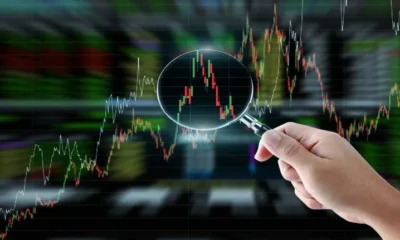
 Finance7 months ago
Finance7 months agoUSA Market Trends & Global Finance Insights
-
Finance7 months ago
Navigating Retirement in the Gig Economy: Challenges and Solutions
-
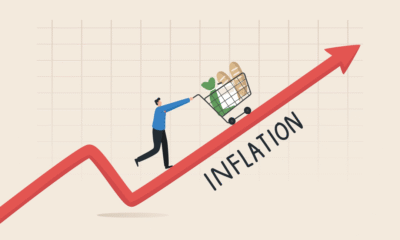
 Finance8 months ago
Finance8 months agoNavigating Personal Finance in the Age of Inflation and High Interest Rates
-
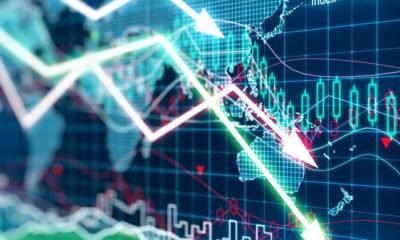
 Economics6 months ago
Economics6 months agoGlobal Markets React to U.S. GDP Contraction: A Comprehensive Analysis
-

 Investing & Finance8 months ago
Investing & Finance8 months agoFractional Investing: The Path to Wealth Democratization
-

 Finance7 months ago
Finance7 months agoTop 10 High-Yield Savings Accounts in the US (2025 Edition)




